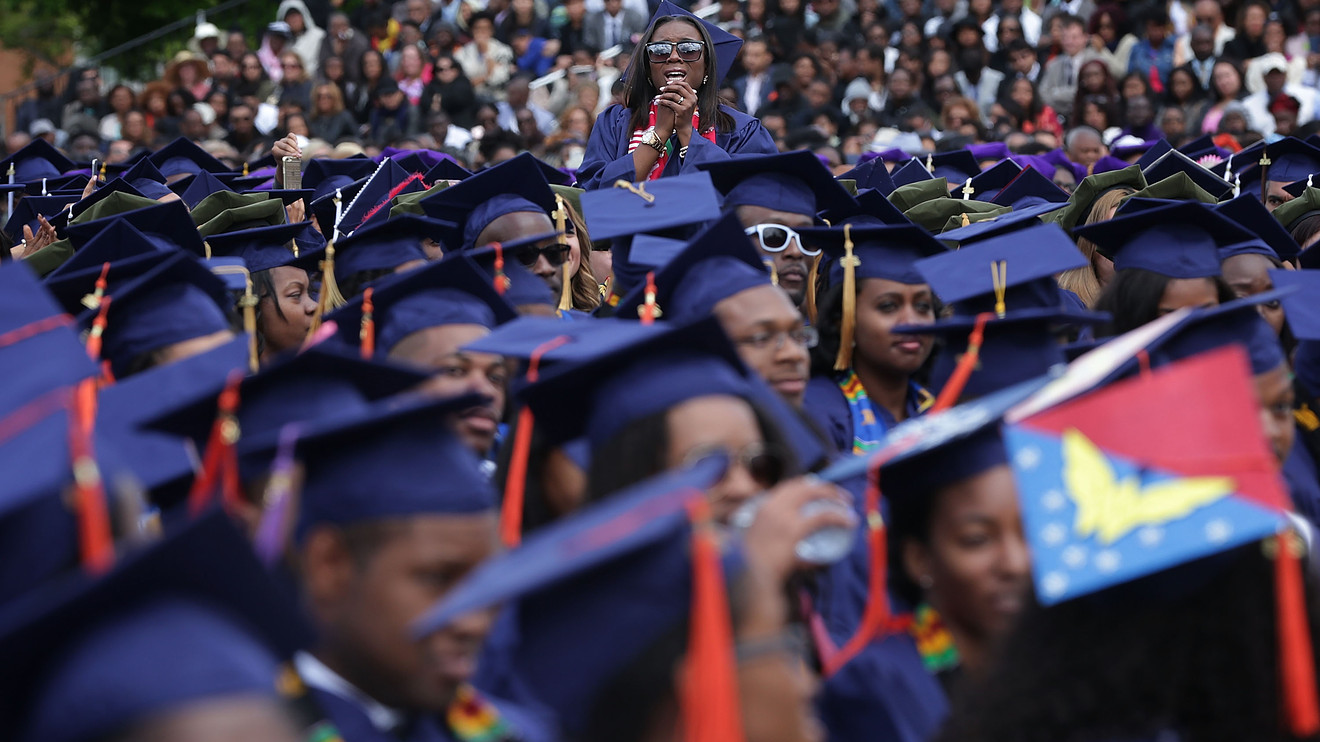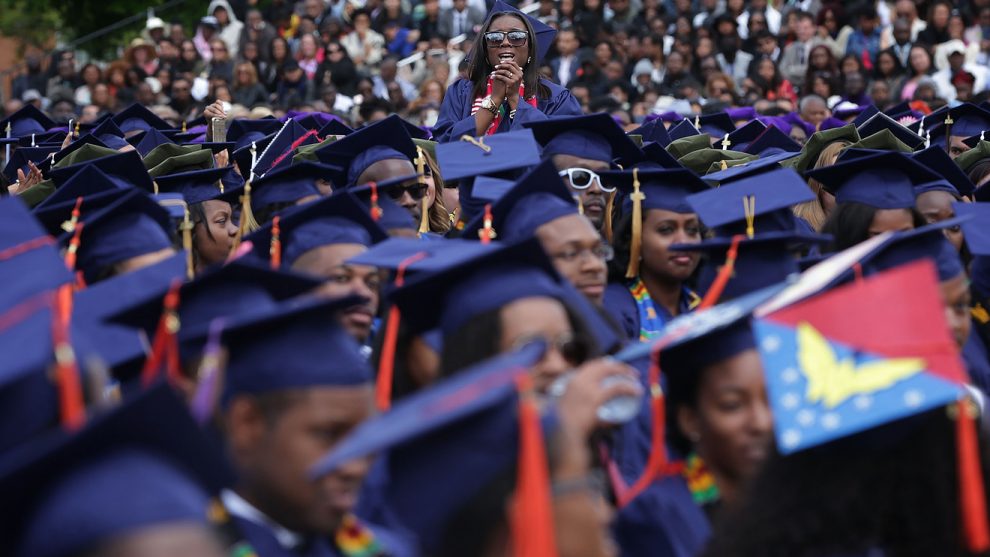
The experience of repaying student loans is unpleasant for millions of graduates, but for some borrowers, paying off student debt is an almost insurmountable challenge.
Twelve years after entering college, white men have paid off 44% of their student-loan balance on average, according to an analysis released Thursday by Demos, a left-leaning think tank. For white women, that share drops to 28%. For black borrowers, the picture is even bleaker. Black women see their loan balances actually grow 13% on average, 12 years after leaving school, while black men see their balances grow 11%.
‘The ability to pay off your loans has everything to do with wages and the ability to gain secure employment, it has everything to do with housing affordability, it has everything to do with child-care costs.’
The age at which students enter college also plays a role in their ability to pay off debt. Students who start college at age 20 or older have paid off just 5% of their debt on average, at minimum, 12 years after leaving school. Students who enter school at age 18 or 19 have typically paid off more than one-quarter of their debt 12 years after leaving college, the report found.
“We think of the ability to pay off student debt as only having to do with student debt,” said Mark Huelsman, associate director, policy and research at Demos and the author of the report. “We know the ability to pay off your loans has everything to do with wages and the ability to gain secure employment, it has everything to do with housing affordability, it has everything to do with child-care costs.”
Huelsman’s analysis is the latest to indicate that structural inequities mean that the student-debt burden is experienced differently by different types of borrowers and that a borrower’s demographics dictate in part how much of a financial benefit they get out of their degree. Undoing the harm caused by the nation’s $1.5 trillion student-loan problem requires a broader solution, like mass debt cancellation, he said.
Earlier this year, Senator Elizabeth Warren, a Democrat of Massachusetts, proposed discharging at least a portion of student debt for most borrowers as part of her presidential campaign.
That idea has received a boost over the past few months. Earlier this year, Senator Elizabeth Warren, a Democrat of Massachusetts, proposed discharging at least a portion of student debt for most borrowers as part of her presidential campaign. Last month, a commencement day announcement by billionaire Robert Smith that he would be wiping away the student debt of the Morehouse class of 2019, created a natural experiment about the impact of student-loan cancellation.
Critics have raised questions about the fairness of these types of proposals to people who scrimped and saved to pay for college or to pay off their student loans. But Huelsman’s analysis hints at the unfairness present in our current system that makes it easier for some to do those things.
The racial wealth gap means black families have less wealth to draw from to pay for college, so black students borrow more. In addition, young black adults are less likely to have family resources — whether it’s just a financial cushion that helps make loan payments manageable or a wealth transfer through an inheritance or other form — to rely on when repaying their loans. They’re also more likely to be contributing to their families’ economic well-being. Add all that to labor market discrimination and what you get is a group of borrowers who are slower to pay back their loans.
Young black adults are less likely to have family resources — whether it’s just a financial cushion that helps make loan payments manageable or a wealth transfer through an inheritance — to rely on when repaying their loans.
“We can’t divorce this conversation from race and privilege,” Huelsman said.
Other data in Huelsman’s analysis helps to illustrate why that’s the case.White households with a bachelor’s degree have about $400,000 in net worth, compared to $68,000 for black households with a college degree.
That difference in assets can have a major impact on a borrower’s ability to pay back their student loans and our current system doesn’t do enough to address that, the report argues. For example, repayment programs aimed at making debt more manageable only consider income, not wealth in a borrower’s ability to make payments.
That likely has an adverse consequence on the ability of borrowers of color to pay back their debt, Huelsman said. Among households in the middle of the income distribution, white households have four times the financial assets of black households and nearly nine times the financial assets of Latinx households.
“Education is not in it’s own right the great equalizer and, if we add student debt on top of that, we may be making the problem worse,” Huelsman said.








